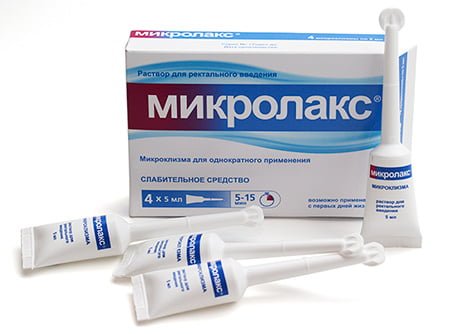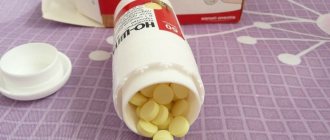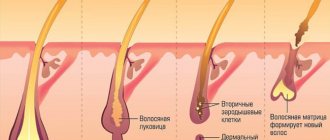Causes and symptoms of constipation
Breastfeeding mothers experience constipation for many reasons. This phenomenon is not as common as during pregnancy. But during lactation, the intestines work worse than usual. The causes of constipation during breastfeeding in a mother are as follows:
See also:
Dental treatment while breastfeedingProblems with breastfeeding
What is the best way to treat hemorrhoids while breastfeeding? Problems with breastfeeding
How to treat a runny nose during lactationProblems with breastfeeding
- Hormonal imbalance.
- Displacement of intestinal loops that did not have time to fall into place after bearing a child.
- Lacerations, vaginal incisions during childbirth, hemorrhoids.
- Weakening of the pelvic floor muscles.
- Changing your diet, which is dominated by foods low in fiber.
- Limited number of trips to the toilet due to busy schedules.
- Low physical activity.
- Taking iron supplements, antacids, vitamins.
- Abuse of laxatives on the eve of childbirth.
- Diseases of internal organs.
After childbirth, the amount of progesterone in a woman’s blood remains elevated, which reduces peristalsis. In addition, the intestinal loops do not immediately fall into place, which can also lead to constipation. Many people advise mothers to eat less fruits and vegetables when feeding so that the child does not have allergies. Such nutrition does not have the best effect on bowel regularity. A nursing woman, with a newborn in her arms, moves little, and often does not even have time to go to the toilet. All these factors together lead to the fact that the mother has to take laxatives.
Constipation symptoms
When does irregular bowel movements constitute true constipation and require a laxative? It is believed that bowel movements less than three times a week should already be alarming. The following symptoms appear with constipation:
- The feces are hard, difficult to pass, and the amount is less than 40 grams.
- In the toilet, mom has to make an effort to defecate.
- After defecation, there remains a feeling of fullness in the intestines.
- Gases accumulate in the stomach and it becomes bloated.
- Colic-type pain appears.
- With prolonged constipation, weakness, drowsiness, and loss of appetite may occur.
If symptoms appear, you should consult a doctor. He will prescribe a laxative suitable for breastfeeding and advise on how to adjust the diet.
Why does constipation occur after a caesarean section?
Constipation after cesarean section occurs for various reasons:
- the effect of drugs on the intestines during surgery and after rehabilitation;
- stress;
- abdominal trauma;
- eating disorders;
- psychological problems;
- concomitant somatic background (chronic diseases of the gastrointestinal tract);
- violation of water and drinking regime;
- decreased physical activity.
No stool as a psychological factor
If the mother does not have problems with the intestines and nutrition, and still does not have stool after the operation, then most likely the reason is a psychological factor - this can be either natural stress in connection with the operation, or fear of the act of defecation itself. Common phobias are:
- seam divergence;
- wound damage;
- healing disorders.
Dehiscence of the sutures
The patient begins to experience fear of the natural process, which leads to constipation, often the spastic version. In this case, the help of a psychotherapist, sedatives and antidepressants are effective. Spastic constipation is often a symptom of hidden postpartum depression.
Problems due to diet
If the diet is violated, there may also be problems with the intestines, which lead to constipation:
- insufficient amount of fluid in the diet (less than a liter per day);
- dry food in the form of snacks, baked goods;
- lack of fiber (few vegetables and fruits);
- complete exclusion of fat from the diet;
- lack of soups and other liquid foods;
- predominance of fastening products;
- fast food;
- hot, spicy, smoked, fried.
Bonding products include:
- strong coffee and tea;
- pasta and cereals;
- bakery products;
- sweets;
- slimy cereal soups;
- mashed potatoes, raw beets, cauliflower, eggplant;
- mushrooms, mustard;
- boiled meat in large quantities;
- rice porrige;
- hard-boiled and raw eggs;
- cocoa.

The consumption of these products should be limited.
What laxatives can you take?
Doctors recommend that a nursing mother drink a laxative, which acts exclusively in the large intestine and is absorbed into the blood in minimal quantities. Then the drug will definitely not pass into breast milk and will not harm the baby. During this period you can take:
- Gutalax
- Chitosan-evalar
- Bisacodyl
- Duphalac
- Fortrans
- Forlax.
The effects of these drugs are different. Gutalax and bisacodyl stimulate the nerve endings in the colon, increasing its peristalsis. Chitosan-Evalar contains aminopolysaccharides and microcrystalline cellulose, which absorb toxic products and increase osmotic pressure in the intestines, thereby creating a laxative effect.
Forlax contains a component that is able to retain water in the intestines. This softens the stool and makes it easier to remove. The main active ingredient of Duphalac is lactulose, which increases osmotic pressure in the colon. This laxative acts during lactation not only as a remedy for constipation. Lactulose serves as a breeding ground for beneficial bacteria, improving the condition of the intestinal flora. Fortran is a saline laxative with a powerful effect. It is prescribed for prolonged constipation, as an alternative to a cleansing enema.
In addition to tablets, you can take laxatives during breastfeeding in the form of suppositories or microenemas. Glycerin suppositories are effective and safe; in addition, they cost pennies. Not long ago, the drug Microlax appeared on the market, available in the form of a microenema. It quickly relieves symptoms. It can be prescribed not only to a nursing mother, but also to a baby from the first days of life. Under no circumstances should sena-based products be prescribed while breastfeeding; it can cause colic and bloating in the baby. In addition, hay is addictive.
List of drugs and brief instructions for each
During lactation, what kind of laxative can you use? Considering all the responsibility for the baby’s health, it is better to choose laxatives from the list of permitted ones during breastfeeding. The list of such drugs is quite large and includes:
- Glycerin suppositories are safe and effective for constipation. Contraindicated for acute hemorrhoids and proctitis. A rare side effect occurs in the form of a burning sensation in the anus;
- “Duphalac” is a drug produced in the form of a syrup, the main component of which is lactulose, a disaccharide that stimulates intestinal motility. The effect of this laxative occurs within 24-48 hours. The drug is contraindicated in cases of congenital lactulose intolerance and diabetes mellitus. May cause diarrhea, bloating, and abdominal pain;
- Sea buckthorn suppositories are a traditional laxative of folk medicine that can be made even at home. Sea buckthorn is not allowed for use by persons with individual intolerance due to the possible development of an allergic reaction;
- "Mikrolaks" is a microenema with a very fast effect. Bowel movement occurs 10-15 minutes after use. The drug is contraindicated for inflammatory diseases of the colon. Side effects from laxatives are extremely rare and occur with increased sensitivity of the skin and mucous membrane of the rectum;
- Forlax is a very popular laxative approved for nursing mothers. The active ingredient is macrogol, which is sold in pharmacies in powder form for oral administration. The effect occurs within approximately 48 hours. The drug is not addictive. Contraindicated in ulcerative colitis. Flatulence, nausea and vomiting may occur as a side effect of the drug.

It is necessary to be very careful about your health, especially for women who breastfeed their children. Any medications can be taken only after a doctor's permission. Laxatives should be taken only as a last resort, when all other methods have been tried, so as not to become addicted to the laxative. If any problems with digestion arise, you should not hesitate, but contact a specialist for qualified help, especially if the health and well-being of the child depends on it.
Video on the topic of the article:
Folk remedies for constipation
Many women during breastfeeding try to cope with constipation with folk remedies. They have a good effect, but before use you should consult a doctor. We offer several recipes that help improve bowel movements during lactation:
- Prune decoction. About 20 grams of dried berries are poured with 200 ml of water, brought to a boil, and left for an hour. Drink three glasses 3-4 times a day.
- Fig infusion. Take 50 grams of dry fruit, chop them, pour 200 ml of boiling water over them and leave for an hour. You can replace the water with milk to achieve a better effect. You should drink a tablespoon, 3-4 times a day.
- Gooseberry decoction. It can be prepared in the season when there are ripe gooseberries. About 15 grams of berries are poured into 200 ml of water, brought to a boil and kept on low heat for another 10 minutes, at the end add a few dried apples. You need to drink 100 ml three times a day.
- Take 20 grams of anise fruit, caraway seeds and fennel seeds, pour 200 ml of warm water, leave for 20 minutes, drink 75 ml three times a day. The infusion is good for constipation associated with intestinal atony.
- Herbal collection. Take a tablespoon of anise, dried strawberry and mint leaves, grated valerian root, dried medicinal chamomile flowers. Pour a liter of boiling water and leave for an hour and a half. Drink half a glass after meals, in the morning and in the evening.
- Raw potato juice is also a good laxative. It is half diluted with boiled water, drink 50 ml three times a day.
When taking decoctions and infusions while breastfeeding, you should carefully monitor the baby's condition. Some of their components can cause allergies in infants.
When to see a doctor
To treat constipation, you should consult your doctor, as all medications have their limitations, including when breastfeeding. Particularly alarming signs in which the visit should not be postponed are:
- blood in stool;
- sharp severe pain;
- increased body temperature;
- change in pulse, blood pressure;
- sharp deterioration in condition;
- lack of stool despite changes in diet and regimen, use of herbal remedies;
- change in stool color (light or black, green).
These symptoms are alarming regarding emergency pathologies and complications and require immediate hospitalization.
We recommend reading the article on how to remove belly fat after a caesarean section. From the article you will learn about the causes of a large belly after surgery, what it can look like depending on the period after the CS, how long it takes to recover, how to remove the belly at home, and also with the help of surgery. And here is more information about the options for sutures after a caesarean section.
Constipation can occur after a cesarean section in all women. Proper nutrition and physical activity usually lead to normal bowel movements. If the condition worsens and it is impossible to independently establish bowel movements, you should seek medical help.
Diet
Proper nutrition is the main guarantee that a woman will not have problems with bowel movements. The diet should include foods rich in coarse fiber. Don't be afraid that your baby will develop allergies or develop colic. Many commonly accepted limitations are actually imposed by stereotypes. The diet of a nursing mother should include:
- Sour milk, kefir, fermented baked milk, natural yoghurts.
- Vegetables (carrots, red beets, zucchini, pumpkin, cauliflower).
- Fruits and berries.
- Bread made from coarsely ground flour, with bran.
- Thin soups.
- Low-fat meat.
- Vegetable oils.
There are foods that it is advisable to exclude during lactation. They really do not have the best effect on the newborn, and cause problems with bowel movements for the mother. Here is their list:
- Strong tea, cocoa and black coffee.
- Juice from pomegranate, pear, quince, jelly.
- Rice porridge.
- Onion, garlic, radish, which cause gastrointestinal irritation.
- Legumes that increase gas formation.
- Animal fats in large quantities.
- White bread, baked goods, pastries with creams.
If you include the right foods in your diet while breastfeeding, your mother will not need laxatives during lactation. The intestines will resume work on their own.
When the mother eats normally, but constipation does not go away without laxatives, her health worsens, she needs to go to the doctor. The cause of this condition may be a serious illness that needs to be treated.
Is it possible to push after a caesarean section?
It is not advisable to push after a cesarean section, so as not to damage the postoperative sutures. Strong tension will increase the pain and may cause them to separate.
How to go to the toilet after surgery
After the operation, you can go to the toilet on your own on the first day: there is no need to strain, and you should not allow pain during bowel movements. You should take a comfortable position and drink some liquid the day before. In case of excessive tension, you should use a microenema. On the first day after surgery, this will be the best measure to avoid unnecessary pushing. At the same time, it is necessary to establish a motor and nutritional regime.
Drinking regime
An important point in the fight against constipation in mothers is maintaining a normal drinking regime. Experts recommend drinking at least 1.5–2 liters of clean drinking water per day. In addition to water, you can drink rosehip decoction, berry compotes, and chicory.
For additional stimulation of the intestines, it is advisable to drink a glass of water on an empty stomach in the morning, and also 20-30 minutes before each meal.
It is best to drink water in small portions throughout the day. For example, it is good to take a few sips of water when you first feel hungry. This technique will help quench thirst, which many people mistake for hunger.
Types of laxatives
A laxative should be selected by a doctor, taking into account the type and causes of constipation, as well as possible contraindications to taking the drug. Medicines taken orally pass through the entire gastrointestinal tract and in most cases the active substances enter the bloodstream and then into the milk.
The components of the drug can harm the child’s body and disrupt the functioning of his digestive system. It is also possible that the baby may refuse to eat due to a change in the taste of breast milk or allergies. Therefore, it is recommended that mothers give preference to topical agents.
Based on the type of therapeutic effect, laxatives are divided into the following groups:
- preparations for softening stool;
- drugs that increase the volume of stool;
- contact means;
- osmotic laxatives;
- suppositories and microenemas.












